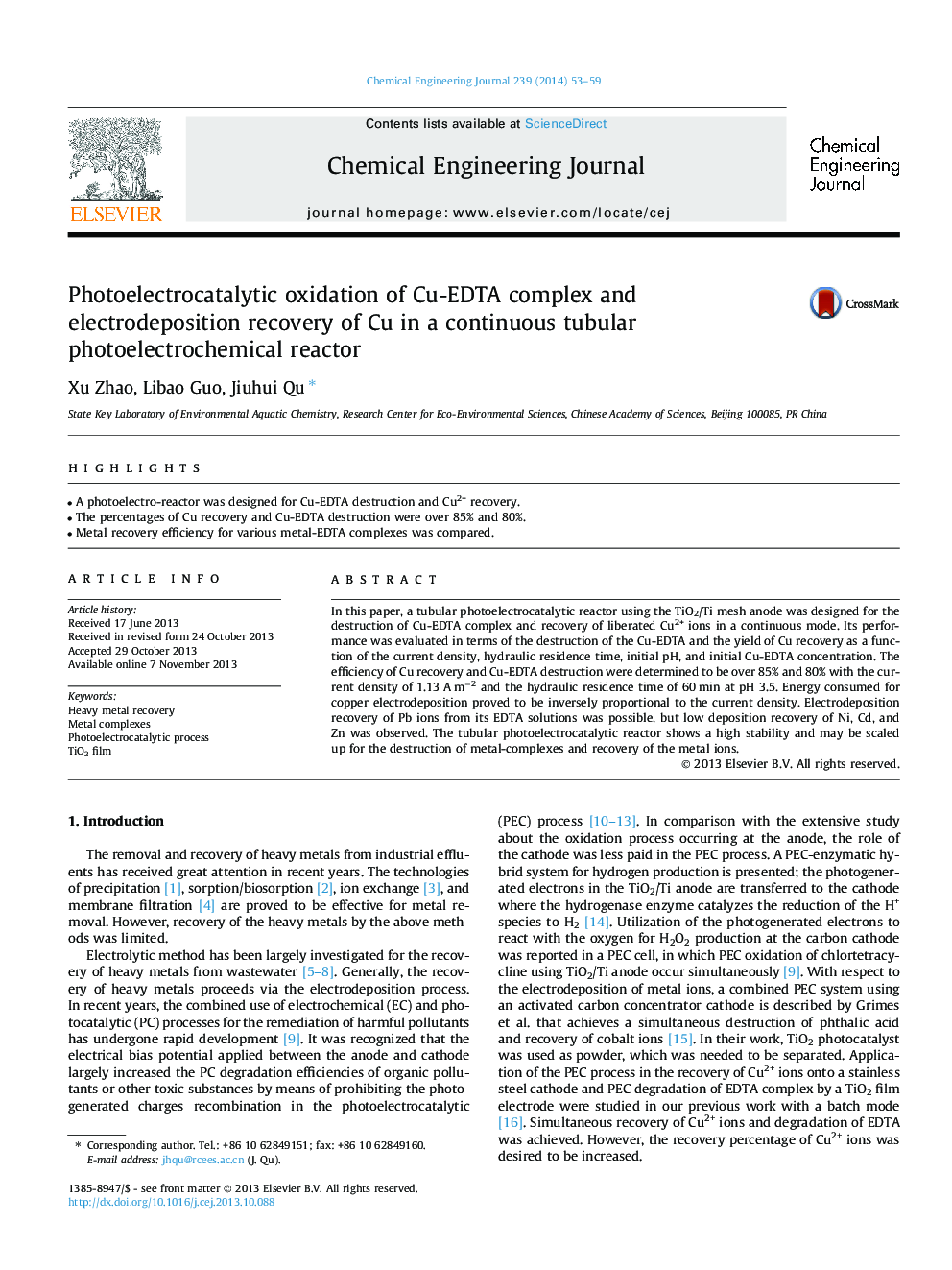| Article ID | Journal | Published Year | Pages | File Type |
|---|---|---|---|---|
| 147923 | Chemical Engineering Journal | 2014 | 7 Pages |
•A photoelectro-reactor was designed for Cu-EDTA destruction and Cu2+ recovery.•The percentages of Cu recovery and Cu-EDTA destruction were over 85% and 80%.•Metal recovery efficiency for various metal-EDTA complexes was compared.
In this paper, a tubular photoelectrocatalytic reactor using the TiO2/Ti mesh anode was designed for the destruction of Cu-EDTA complex and recovery of liberated Cu2+ ions in a continuous mode. Its performance was evaluated in terms of the destruction of the Cu-EDTA and the yield of Cu recovery as a function of the current density, hydraulic residence time, initial pH, and initial Cu-EDTA concentration. The efficiency of Cu recovery and Cu-EDTA destruction were determined to be over 85% and 80% with the current density of 1.13 A m−2 and the hydraulic residence time of 60 min at pH 3.5. Energy consumed for copper electrodeposition proved to be inversely proportional to the current density. Electrodeposition recovery of Pb ions from its EDTA solutions was possible, but low deposition recovery of Ni, Cd, and Zn was observed. The tubular photoelectrocatalytic reactor shows a high stability and may be scaled up for the destruction of metal-complexes and recovery of the metal ions.
